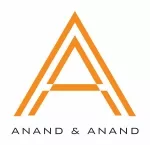- with Inhouse Counsel
- with readers working within the Pharmaceuticals & BioTech industries
The Indian Government has been on a mission to ensure that at India's grassroot level, there is financial, technical and entrepreneurial strength. To further this mission, the “One District One Product” scheme was introduced, the purpose of which was to render necessary support to agricultural products. The idea was to provide infrastructure, marketing and financial strength to unique products in each district for effective monetization.
On the heels of such initiatives, the Indian Government has now announced the “One Nation One Fertilizer” (ONOP) Policy, which is expected to go into effect from October 02, 2022. Amongst many other practical and logistical reasons identified, one of the main purposes behind this scheme is to bring uniformity in fertilizer brands in the country through decontrolling Urea and under this, crop nutrients such as Urea, Di-ammonium Phosphate and Muriate of Potash are to be sold under a single brand name BHARAT irrespective of the details of the manufacturer. This scheme only applies to fertilizers that are under the subsidy mechanism. The trade mark BHARAT will be accompanied with the logo of the subsidy scheme offered by the Government as well. Farmers currently procure fertilizers from vendors of their choice irrespective of the vendor's physical location, which had led to an increased freight cost whereas the Government identifies Urea as a commodity with not much differentiating power between the vendors' products. When the products of all vendors have similar branding, farmers will not have to resort to such cross-country procurement leading to a substantial reduction in freight subsidy. All Urea bags are required to have a bar code and a fertilizer company would only be eligible for a subsidy if the product is sold through a reading of the bar code. This is to ensure effective tracking of products across state boundaries and hence, having a seamless process of procurement.
The notification also addresses the issue of placement of brand name, logo and details of the manufacturing company and elaborates that two-thirds of the bag will carry the brand BHARAT and the logo of the subsidy scheme and one-third space would be available for the company logo and other details required to be on a bag of fertilizer.
This announcement has not evoked much positive reaction from fertilizer manufacturing companies as they fear that the brand identity for their brands may get compromised in the process. The agricultural ecosystem in India is unique in that the fertilizer companies have huge investments not just for manufacturing but also in imparting specialized training to the farmers, conducting surveys etc. This has ensured long standing brand recollection and brand loyalty for such manufacturing companies, which may be set to change post this new scheme.
The primary purpose of Trade Marks is to serve as source indicators and differentiators for their proprietors, and the manner of usage of the brand in trade and its corresponding entrenchment in the minds of the consumers solidifies its journey. This new scheme, thus, raises a unique question with its basis in trade marks law on the composite goodwill that the manufacturing companies will generate for their own brands when they are used with the trade mark BHARAT. Likewise, in the event the quality of the product is sub-par, would such negative reputation be attributed to the prominent brand BHARAT mentioned on the bag?
Co-branding has its pros and cons. Co-branding is an extremely effective tool when both brands get to benefit from each other's brand equity and in many cases, opens the other brand to the customer base of the first. While this is a win-win, addressing the issue of dilution remains of paramount importance through such co-branding journey, which will be the litmus test for the success of this co-branding initiative.
The content of this article is intended to provide a general guide to the subject matter. Specialist advice should be sought about your specific circumstances.


